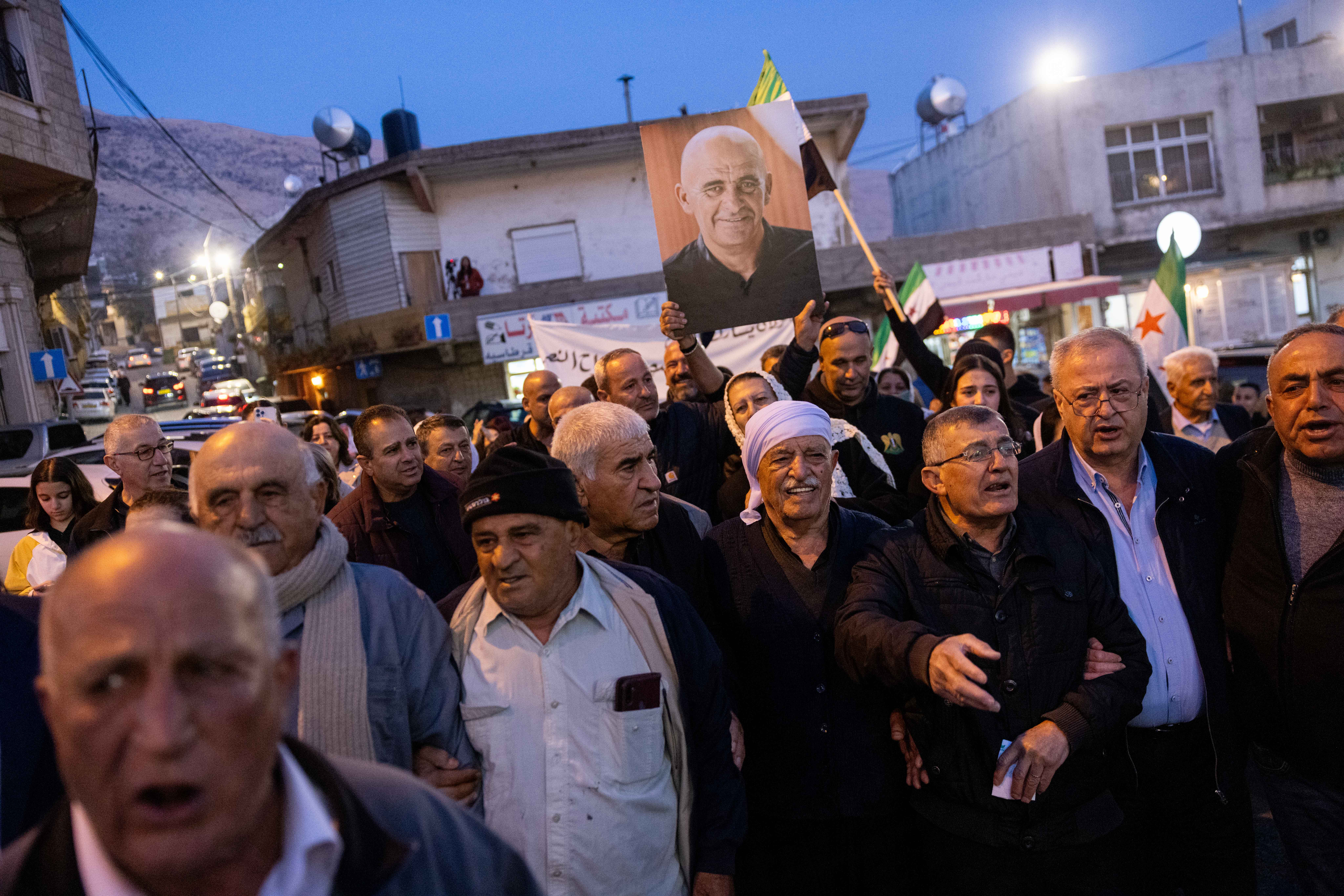Israel and Syria are reportedly moving toward signing a historic peace agreement by the end of 2025, with negotiations focusing on the contentious issue of the Golan Heights and the potential territorial arrangements that could reshape Middle Eastern diplomacy.
According to Syrian sources speaking to i24NEWS, the potential agreement would normalize relations between the two countries and establish what one source described as making the Golan Heights “a garden for peace.” However, the fate of this strategic territory remains the most complex aspect of ongoing negotiations.
Under the reported framework, Israel would gradually withdraw from Syrian territory it seized after invading the buffer zone on December 8, 2024, including the strategic peak of Mount Hermon. This withdrawal would occur following the toppling of Bashar Assad’s regime and the rise of the new Syrian leader, Ahmad al-Sharaa.
Strategic Affairs Minister Ron Dermer, a close ally of Prime Minister Benjamin Netanyahu with strong ties to the Trump administration, traveled to Washington to discuss the situation and the potential expansion of the 2020 Abraham Accords to include Syria.
President Donald Trump has expressed cautious optimism about the possibility, telling Fox News that he had been approached by countries wishing to join the Abraham Accords. Trump also announced the lifting of sanctions on Syria “to give them a chance,” acknowledging that “the sanctions are biting” and describing the gesture as requested by regional allies.

The United States has lifted most of its sanctions on Syria, a move described by officials as an “opportunity” for the war-torn nation to rebuild its economy after over 14 years of civil war, according to a report in The Financial Times. The decision, formalized by an executive order signed by President Donald Trump on Monday, marks a significant shift in U.S. policy toward the Arab state.
The White House announced that the termination of the sanctions program represents a vote of confidence in Syria’s new leader, Ahmed al-Sharaa. Sharaa’s Islamist movement led a rebel offensive that toppled the more than 50-year rule of Bashar Al-Assad, fundamentally altering Syria’s political landscape.
President Trump first revealed plans to lift the sanctions during a visit to Riyadh, Saudi Arabia, where he met with Sharaa personally. Trump described the Syrian leader as a “tough guy” and a “fighter” with a “very strong past,” indicating Washington’s willingness to work with the new Syrian government and explore normalization of relations.
While most sanctions are being lifted, U.S. officials indicated that the executive order allows Washington to “maintain sanctions where appropriate,” including against the exiled Assad, his associates, and “other destabilizing regional actors.” This selective approach demonstrates America’s strategy of supporting Syria’s new leadership while maintaining pressure on remnants of the old regime.
The negotiations reveal fundamental disagreements about the future of the Golan Heights. Israeli Foreign Minister Gideon Saar has taken a firm stance, declaring that “in any peace agreement, the Golan will remain part of the State of Israel.” Saar emphasized that Israel applied its laws to the territory over 40 years ago and considers it “an inseparable part of the State of Israel.”

However, Israeli officials privately express doubt about whether al-Sharaa would agree to any peace deal that doesn’t include a complete Israeli withdrawal from the Golan Heights, which has been Syria’s consistent demand in previous negotiations.
Surprisingly, recent reports from Lebanese news channel LBCI suggest a potential shift in Syrian positions. According to unnamed sources, Syria is not currently demanding that Israel return the parts of the Golan Heights captured in 1967. Instead, Syrian demands focus on:
- Israeli recognition of the new Syrian regime under Ahmad al-Sharaa
- Withdrawal from areas Israel took control of in southern Syria since January 2025
- Clearly defined security arrangements in southern Syria and the border triangle between Jordan, Syria, and Israel
- Unspecified U.S. support for Syria
The negotiations face significant external pressures. Syrian sources told the Hezbollah-affiliated Al-Akhbar newspaper that Turkey opposes any Israeli influence in Damascus, with pro-Turkish factions in Syria fearing the country could become subservient to Israeli and Saudi interests.
American pressure appears to be driving the talks forward, with intensive discussions underway to reach either a comprehensive peace agreement or, at the very least, security arrangements that would end the state of war between the two countries.
The Golan Heights has been at the center of Israeli-Syrian tensions since Israel’s establishment in 1948. The strategic plateau, rising 1,200 meters above the Sea of Galilee, has changed hands multiple times throughout the region’s turbulent history.
Following Israel’s independence in 1948, Syria controlled the Golan Heights and used its elevated position to shell Israeli settlements in the valleys below. The strategic advantage of the heights made it a constant source of tension, with Syrian forces regularly attacking Israeli farmers and communities from fortified positions on the plateau.
During the 1950s and early 1960s, the Golan became a focal point of the broader Arab-Israeli conflict. Syria’s attempts to divert the headwaters of the Jordan River, which flow through the Golan, led to what became known as the “Water War” – a series of skirmishes that contributed to the tensions leading up to the 1967 Six-Day War.
Israel captured the Golan Heights during the final day of the Six-Day War in June 1967. The conquest came after years of Syrian shelling of Israeli settlements and was strategically crucial for Israel’s security. The capture displaced approximately 130,000 Syrian residents, mostly Druze Arabs, though some sources put the pre-1967 Syrian population as low as 7,000-8,000 people.

The Israeli victory transformed the strategic balance, ending Syrian artillery attacks on Israeli communities and providing Israel with a crucial buffer zone against future Syrian military advances.
Following the 1967 war, Israel began establishing settlements in the Golan Heights. The first Israeli settlement, Merom Golan, was established in 1967, and by the 1970s, dozens of Israeli communities had been built across the plateau.
In 1981, under Prime Minister Menachem Begin, Israel formally annexed the Golan Heights, extending Israeli law and administration to the territory. The annexation was not recognized by the international community, including the United Nations Security Council, which condemned the move in Resolution 497.
Currently, the Golan Heights is home to approximately 50,000 residents, roughly split between Israeli settlers and Druze Arabs who remained after 1967 or are descendants of those who stayed. The Israeli settlements include about 25,000 residents living in more than 30 communities, while about 23,000 Druze Arabs live in four main villages: Majdal Shams, Buq’ata, Mas’ada, and Ein Qiniyye.
The Druze community has maintained a complex relationship with Israeli rule. While most have refused Israeli citizenship, preferring to retain their Syrian identity, they have generally maintained peaceful relations with Israeli authorities and have not been subject to the same restrictions as Palestinians in other occupied territories.
A major diplomatic shift occurred in March 2019 when President Donald Trump recognized Israeli sovereignty over the Golan Heights, making the United States the first country to formally acknowledge Israel’s claim to the territory. Trump’s proclamation declared that “the State of Israel shall be recognized as the sovereign over the Golan Heights.”
The recognition came during Trump’s first term as part of his broader pro-Israel policy, which also included moving the U.S. embassy to Jerusalem and recognizing Israeli settlements in the West Bank as not necessarily illegal under international law. Trump’s decision was praised by Israeli leaders but condemned by Syria, Arab states, and much of the international community.

The Golan Heights provides Israel with significant strategic and economic advantages. The territory serves as a crucial early warning position against potential attacks from Syria. It provides control over important water resources, including tributaries to the Jordan River and the Sea of Galilee.
The region has also become economically significant to Israel, with a thriving agricultural sector that produces wine, beef, and various crops. The Golan’s elevation and climate make it ideal for cattle ranching and viticulture, with several Israeli wineries gaining international recognition.
Additionally, the discovery of oil reserves in the Golan has added another dimension to its strategic value, though extraction remains limited and controversial.
As negotiations continue, the future of the Golan Heights remains uncertain. While Israeli officials maintain their position that the territory will remain part of Israel, the potential for a comprehensive peace agreement with Syria could reshape the entire regional dynamic.
The success of these talks could mark a significant expansion of the Abraham Accords and potentially influence other regional conflicts. However, with external pressures from Turkey and internal divisions within Syria about engaging with Israel, the path to peace remains complex and uncertain.
The outcome of these negotiations will likely determine not only the future of Israeli-Syrian relations but also the broader trajectory of Middle Eastern diplomacy in the coming years.




